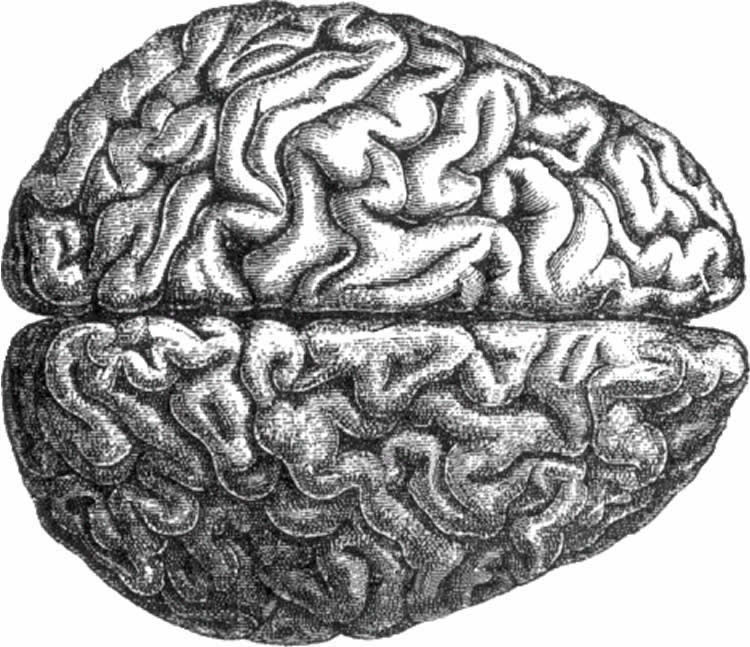Summary: Researchers have discovered an early immune response in people with a genetic predisposition to Alzheimer’s disease.
Source: DZNE.
Immune cells of the brain become active years before the disease becomes apparent.
Little is known about the role of the brain’s immune system in Alzheimer’s disease. Researchers at the Munich site of the German Center for Neurodegenerative Diseases (DZNE) and the hospital of the Ludwig Maximilian University (LMU) Munich have now found an early immune response in individuals with a genetic predisposition to Alzheimer’s: their brain’s showed abnormal immune reactions as early as about seven years before the expected onset of dementia. These results demonstrate that in cases of Alzheimer’s, inflammatory processes in the brain evolve dynamically and are precursors of dementia. These immune responses can be detected by means of a protein in the cerebrospinal fluid, offering physicians the possibility to trace the progression of the disease. The study results are published in the journal “Science Translational Medicine”.
The scientists headed by Prof. Christian Haass and Prof. Michael Ewers were able to detect an increasing immune activity of the brain by measuring levels of the protein “TREM2” in the cerebrospinal fluid. TREM2 is segregated by certain immune cells of the brain – called microglia – and thus reflects their activity. In cases of the inherited form of Alzheimer’s disease, the timing for the onset of dementia can be precisely predicted. The researchers were therefore able to monitor the rise of TREM2 levels years before the expected occurrence of dementia symptoms.

“The activity of the microglia is stimulated by dying brain cells, not by the deposits of amyloid proteins, called plaques, which also occur in Alzheimer’s disease,” Haass notes. “The microglia may have a protective function, which however comes to a standstill as the disease progresses. We are therefore searching for drugs to increase the activity of the microglia.”
Part of the DIAN project
127 individuals with a genetic predisposition to Alzheimer’s participated in the study. They were on average 40 years old. The vast majority showed no symptoms of dementia or had only minor cognitive impairments. The study was conducted as part of the so-called DIAN project (Dominantly Inherited Alzheimer Network), a worldwide network for research into the inherited form of Alzheimer’s disease.
According to Ewers, “There are many similarities between the inherited form of Alzheimer’s disease and the so-called sporadic variant, which is far more common. TREM2 levels could therefore be a biomarker used to track immune activity while Alzheimer’s is progressing, irrespective of whether the disease is genetic or not. TREM2 may also serve as a therapeutic marker to monitor drug response. We will look into these aspects in the future.”
Funding: Funding provided by European Research Council, Deutsche Forschungsgemeinschaft, and others.
Source: Marcus Neitzert – DZNE
Image Source: NeuroscienceNews.com image is in the public domain.
Original Research: Abstract for “Early changes in CSF sTREM2 in dominantly inherited Alzheimer’s disease occur after amyloid deposition and neuronal injury” by Marc Suárez-Calvet, Miguel Ángel Araque Caballero, Gernot Kleinberger, Randall J. Bateman, Anne M. Fagan, John C. Morris, Johannes Levin, Adrian Danek, Michael Ewers, and Christian Haass in Science Translational Medicine. Published online December 14 2016 doi:10.1126/scitranslmed.aag1767
[cbtabs][cbtab title=”MLA”]DZNE. “Early Signs of Alzheimer’s Detected in Cerebrospinal Fluid.” NeuroscienceNews. NeuroscienceNews, 14 December 2016.
<https://neurosciencenews.com/csf-alzheimers-neurology-5750/>.[/cbtab][cbtab title=”APA”]DZNE. (20114, December 14). Early Signs of Alzheimer’s Detected in Cerebrospinal Fluid. NeuroscienceNews. Retrieved December 14, 2016 from https://neurosciencenews.com/csf-alzheimers-neurology-5750/[/cbtab][cbtab title=”Chicago”]DZNE. “Early Signs of Alzheimer’s Detected in Cerebrospinal Fluid.” https://neurosciencenews.com/csf-alzheimers-neurology-5750/ (accessed December 14, 2016).[/cbtab][/cbtabs]
Abstract
Early changes in CSF sTREM2 in dominantly inherited Alzheimer’s disease occur after amyloid deposition and neuronal injury
Emerging evidence supports a role for innate immunity and microglia in Alzheimer’s disease (AD) pathophysiology. However, no marker related to microglia has been included in the temporal evolution models of AD. TREM2 is a transmembrane protein involved in innate immunity and is selectively expressed by microglia and genetically linked to AD and other neurodegenerative disorders. Its ectodomain is released by proteolysis as a soluble variant (sTREM2) and can be detected in the cerebrospinal fluid (CSF). In patients with autosomal dominant AD, we tested how many years before the expected symptom onset did CSF sTREM2 increase in mutation carriers (MCs) compared to noncarriers (NCs). We also determined the temporal sequence of changes in CSF sTREM2 and markers for amyloid deposition and neurodegeneration as well as cognitive performance. We included 218 participants consisting of 127 MC and 91 NC siblings from the Dominantly Inherited Alzheimer Network. We observed that CSF sTREM2 increased in MCs compared to NCs 5 years before the expected symptom onset and this difference remained significant until 5 years after the expected symptom onset. Changes in CSF sTREM2 occurred after alterations were observed in markers for brain amyloidosis and neuronal injury. We propose that microglial activation occurs several years before the expected symptom onset, but after amyloidosis and neuronal injury have already occurred.
“Early changes in CSF sTREM2 in dominantly inherited Alzheimer’s disease occur after amyloid deposition and neuronal injury” by Marc Suárez-Calvet, Miguel Ángel Araque Caballero, Gernot Kleinberger, Randall J. Bateman, Anne M. Fagan, John C. Morris, Johannes Levin, Adrian Danek, Michael Ewers, and Christian Haass in Science Translational Medicine. Published online December 14 2016 doi:10.1126/scitranslmed.aag1767






